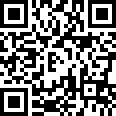Once I get my tools rounded up I like to plug in my soldering iron and let it heat up while prepping my materials.
First things first, the tip of the soldering gets hot - up to 800 degrees Fahrenheit, so don't touch it. I know this seems obvious, but many people seem to burn themselves at some point while soldering.
If you're using a new soldering iron you will want to put a small amount of solder on the tip of the hot iron before you start working. This is called tinning the iron and you only have to do it with a new iron. Once you start using it will usually have some solder on it already and be ready to go.presolder brass fittings,presolder bronze fittings,presolder copper fittings
Once the iron reaches temperature (some irons take minutes to do this and some irons take seconds), I like to clean the tip of my iron on a wet sponge. You can wet the sponge on your soldering base if you have one, or you can just use a damp sponge or steel wool. Gently touch the tip of the soldering iron to the sponge and clean off any old bits of solder that might be stuck to it. It will sizzle a bit; this is normal.
I asked Mitch, a soldering expert who works at the control tower by day and is numberandom by night, for some tips. Mitch showed me a good idea for how to hold solder wire: he cuts a piece of it off the roll, and then makes a coil at one end with a short lead at the other. This helps him hold it steady and apply just the right amount of solder. This is a way better idea than trying to hold the whole spool of solder or grab onto just one thin strand.solder ring brass fittings,solder ring bronze fittings,solder ring copper fittings
Next it's time to pay some attention to the material you're soldering. If you're soldering wire, you'll need to strip back about 1/2" of insulation to expose the bare wire. If your joints are going to be wire-to-wire or wire-to-lead, you can twist them together tightly b



